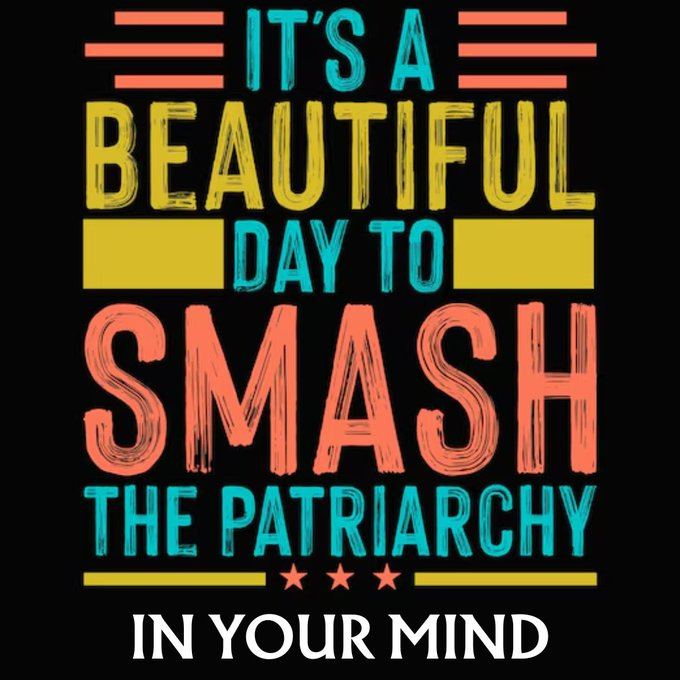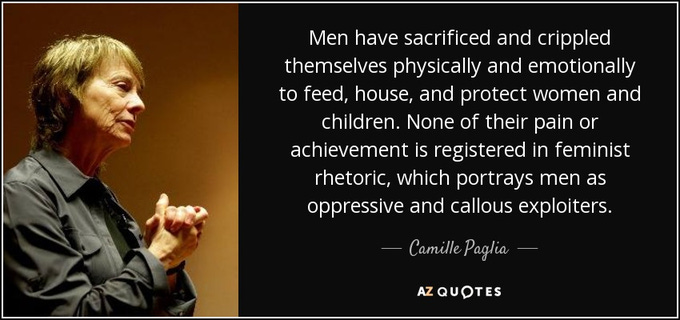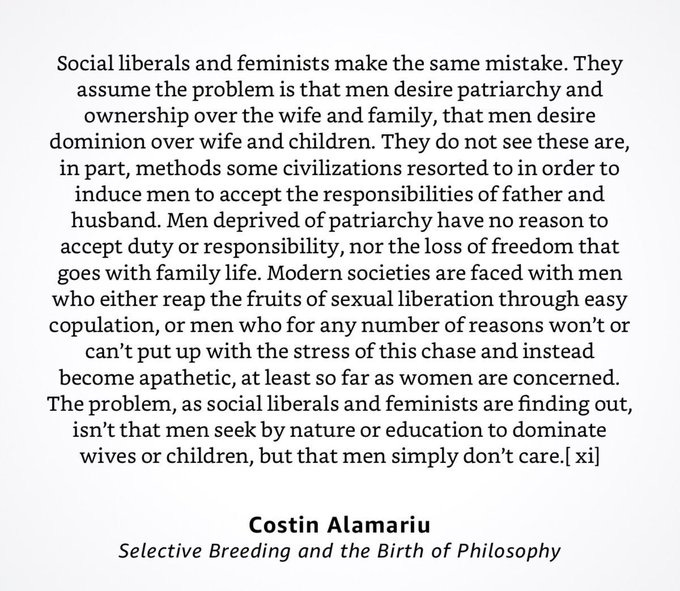“The Patriarchy did it!” “The Patriarchy made me do it!” “It’s The Patriarchy’s fault!” These type of refrains are common in contemporary feminist discourse. The Patriarchy functions as a feminist conspiracy theory, and here’s why. First, we must distinguish The Patriarchy from traditional patriarchy, even though the former derives from the latter. Like all conspiracy theories, The Patriarchy distorts elements of truth into a more expansive and malevolent narrative. Traditional patriarchy refers to a social or governmental system where the father or eldest male is the head of the family, clan or village and descent follows the male line. In contrast, The Patriarchy describes an all-powerful, pervasive system of oppression that benefits men by subjugating women.
This article examines how The Patriarchy mirrors conspiracy theories like those surrounding the Illuminati or Freemasons by highlighting the characteristics they share. I also draw upon Camille Paglia's incisive critiques of contemporary feminism to support my thesis that The Patriarchy is a feminist conspiracy theory. So, feminists, it’s time to “smash the patriarchy” that lives in your heads. This discourse needs to grow up.
Simplification of Complex Issues
Conspiracy theories provide simple explanations for complex social phenomena, typically attributing them to the actions of a clandestine group. Similarly, The Patriarchy serves as a unifying framework for understanding a wide range of inequalities between men and women by reducing everything to “male domination,” which feminists often code as the outcome of some nefarious plot.
Paglia argues that the simplification inherent in The Patriarchy conspiracy sows confusion around sex-based relations and what changes and what does not or cannot. She criticizes this approach for ignoring the complexity of human sexuality and the cultural forces that shape relations between men and women. Blaming The Patriarchy fosters a victimhood mentality that disempowers women by portraying them as passive recipients of male oppression rather than active participants in society.
Us vs. Them
Conspiracy theories create a clear divide between the conspirators and the unsuspecting or powerless masses. The Patriarchy narrative imposes a strict dichotomy between oppressors (men and male-dominated institutions) and the oppressed (women and women-dominated institutions), fostering a zero-sum outlook.
Paglia critiques the adversarial "us vs. them" mentality promoted by The Patriarchy narrative, arguing that it reinforces outdated stereotypes and ignores the dynamics of male-female relations. This belief oversimplifies the complexities of human relationships and contributes to a polarized society where productive dialogue and understanding are hindered.
Resistance to Contradictory Evidence and Alternative Explanations
Conspiracy theorists dismiss or ignore evidence that contradicts their beliefs. Similarly, feminists who adhere to The Patriarchy narrative react defensively when confronted with evidence or arguments that challenge this ideology. This behavior creates an echo chamber effect, where only supporting evidence is acknowledged. Men who dissent are dismissed as sexist or accused of harboring unacknowledged "male privilege." Women who challenge this narrative are labeled "right-wing," "handmaids," or diagnosed with "internalized patriarchy."
For instance, feminists dismissed or derided Costin Alamariu's thesis that patriarchy emerged from ancient breeding practices and the development of an aristocracy without consideration. Such reactions perpetuate one-sided, and thus false, explanations of male-dominated institutions and societies and how these emerged, matured, and changed.
Belief in The Patriarchy blinds feminists to cultural and material change and perpetuates stereotypes. For example, despite longitudinal studies showing that men’s share of housework has increased over the past 50 years in high-income countries, many women still claim that men treat their wives or girlfriends as maids. The data shows convergence, not stasis or increasing divergence, contradicting the stereotype of "lazy husbands" treating their wives like servants.
These feminists also resist confronting the implications of their beliefs about the division of housework and child-rearing. Their premise suggests that either men are naturally predisposed to shirk domestic duties, or the belief itself is flawed. If patriarchy is a human invention rather than a natural fact, then women, as the primary reproducers of patriarchy within the home, must reconsider how they are raising their children. Unfortunately, feminist theory often dismisses these questions because they challenge the foundational belief in The Patriarchy as an immutable enemy and women as blameless victims of it.
Paglia criticizes contemporary feminism for resisting alternative explanations, particularly those acknowledging a biological basis for sex differences. She argues that many feminists dismiss evidence that doesn’t align with their ideological framework, creating an echo chamber where only specific narratives are accepted. This resistance stifles intellectual freedom and hinders a more nuanced, dialectical understanding of male-female relations. Within the echo chambers that sustain The Patriarchy myth, feminists often disregard or mock dissenting perspectives, fostering a hostile environment that obstructs productive debate and reconciliation.
Emotional and Motivational Appeal
Conspiracy theories evoke strong emotions and a sense of purpose, motivating adherents to action based on a perceived threat. The Patriarchy unifies feminists by providing a clear, though abstract, target for activism and a framework for understanding personal and collective grievances.
Opposing sexism and real misogyny is crucial, but framing every issue between men and women as a battle against an omnipresent patriarchy contributes to a culture of perpetual grievance that posits women as victims without agency.
Conclusion
Analyzing The Patriarchy as a conspiracy theory exposes it as a simplistic and counterproductive feminist myth. Like all conspiracy theories, The Patriarchy offers a simplified, emotionally charged explanation for historically and geographically diverse social phenomena. While it can serve as a unifying enemy—or scapegoat—for feminist activism, it grossly oversimplifies male-female relations, reinforcing an adversarial, us-versus-them ideology that disempowers women by perpetuating the image of a child-like victim with little agency. Camille Paglia's critiques add depth to this analysis, particularly regarding the roles of biology, sexual reproduction, and sexuality. Feminism needs to purge The Patriarchy conspiracy theory to foster more robust and productive discussions about the relations between the sexes and the various factors contributing to socially generated inequalities. So, yes, feminists, by all means, smash The Patriarchy living rent-free in your heads.







